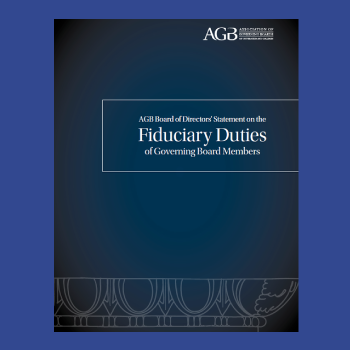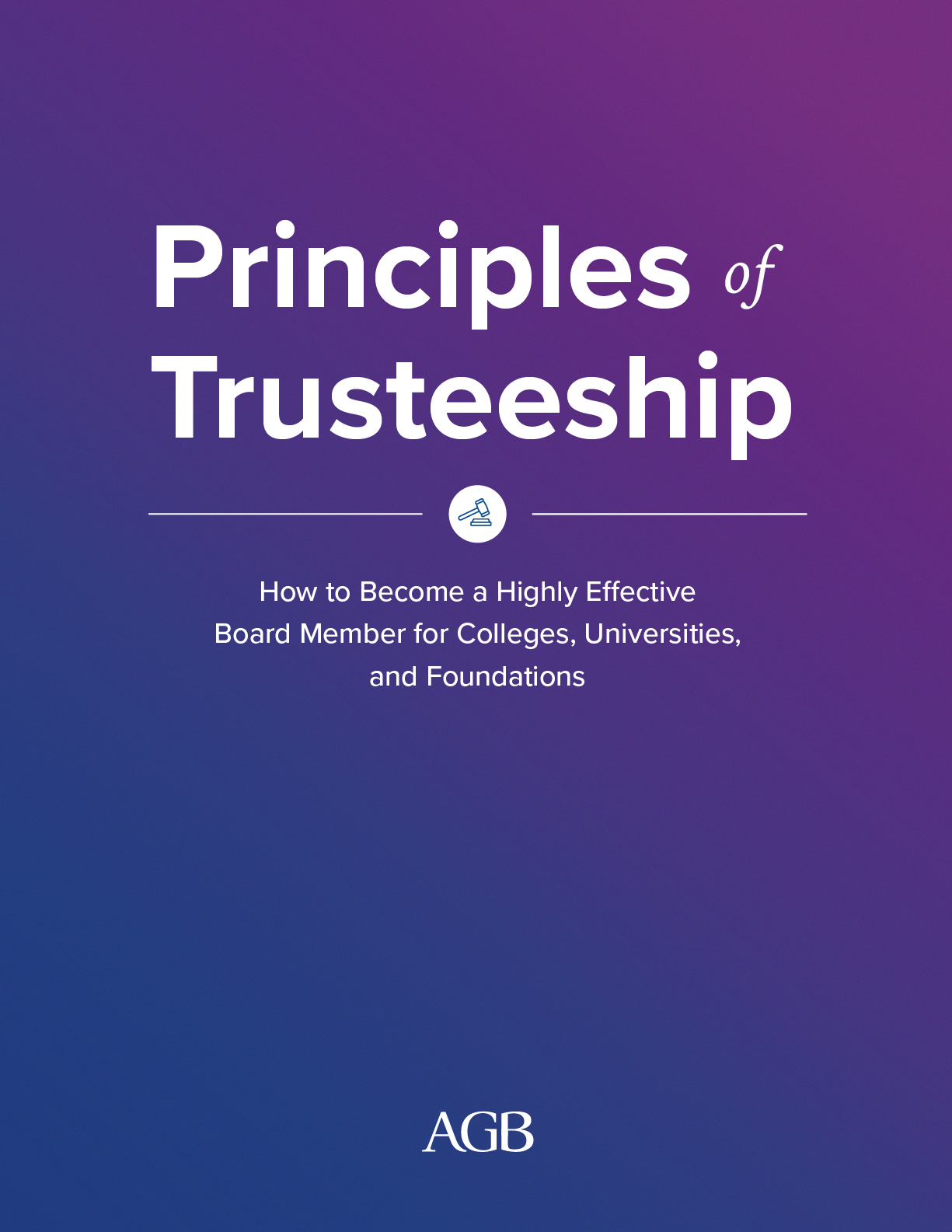Principle 2:
Respect the difference between the board’s role and the administration’s role.
Principle 2 supports the fundamental function of understanding governance by defining how boards, faculty, and administrators should work collaboratively toward a common vision. In order to embrace shared governance, you must:
- Honor the academic norm of shared governance, which includes the board, president, administration, and faculty. The board has primary fiduciary responsibilities, and it delegates primary management responsibility to the president and primary responsibility for academic programs to the faculty.
- Be humble and respect your partners in governance and leadership. Use your position to better understand others’ perspectives and take them into account.
- Provide advice and counsel but leave operational decisions to the administration. Serve as a thought partner, sounding board, and pro bono advisor by sharing your relevant expertise and experience.
“My experience is that when trustees don’t respect the distinction,
it’s because they don’t understand the distinction.”
—Foundation Executive
Questions for self-reflection.
- What knowledge, skills, and abilities do you have that could be useful to the administration? How do you share your expertise and experience without crossing the line into management?
- What is the nature of the relationship between your board and president? How does the board show its support? How does it hold him or her accountable?
- How do board members interact with the administration and faculty, formally and informally?
- How does shared governance function at this organization? Among whom is it shared? When and where does it work well? When and where is it challenging? How could it be strengthened?
- What responsibilities rest with the faculty governing body? When and where does its work intersect with board work? How do the board and faculty governing body communicate?
This guide conveys the essence of highly effective trusteeship in a concise, easy-to-use format. It defines the attitudes and actions of highly effective board members, and provides insight into three fundamental functions:
- Understand governance by embracing all of your responsibilities in a structure of shared leadership.
- Lead by example by upholding the highest standards of integrity.
- Think strategically by focusing on what matters most to the long-term success of the whole enterprise.








